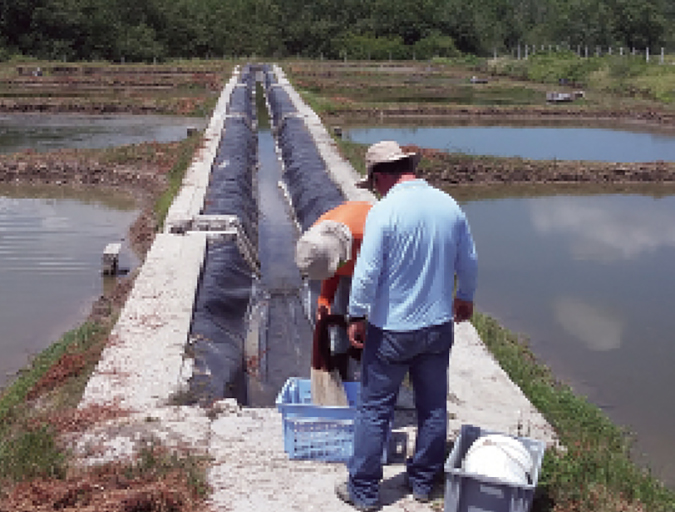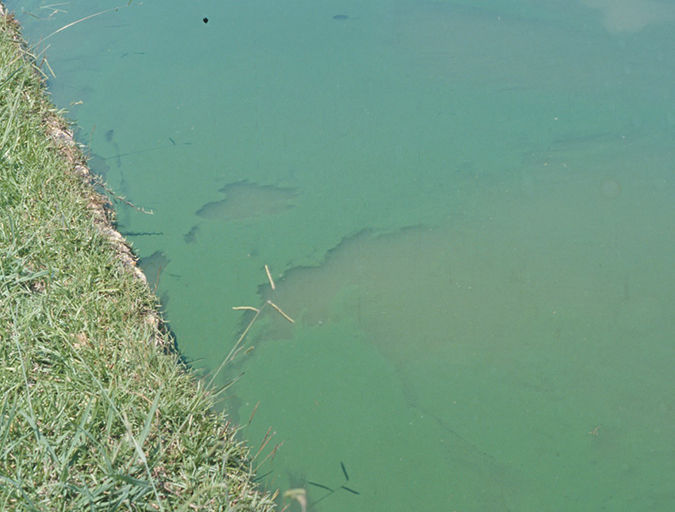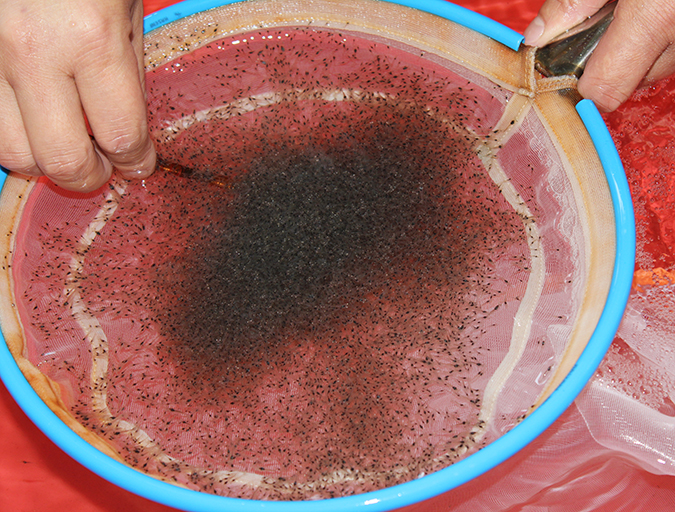At Nicovita Symposium, Dr. Dean Akiyama tells Ecuadorian shrimp farmers to ‘fix the house’ for better performance

The shrimp-farming industry needn’t look further than the chicken-farming industry for guidance on proper pond management, said Dr. Dean Akiyama, senior vice president of the Aquaculture Technology & Research Division at Charoen Pokphand Indonesia, at the 8th Nicovita Symposium in Guayaquil, Ecuador, on April 14.
“The chicken-farming industry is a model for the shrimp-farming industry. It’s the most advanced, sophisticated of all animal production industries,” said Akiyama, who has nearly 30 years of aquaculture experience.
“Broilers [are brooded at] 25 degrees Celsius at 85 percent humidity. Where are you going to get 25 degrees Celsius at 85 percent humidity? Any place in the world? It’s pretty hard. So what happens? They don’t tell the chickens to suffer. They fix the house. They set up a fan that draws air over a water-cooling panel and flows throughout the house, which removes excess nitrogen. They replace the litter after every cycle.
“When you prep your pond bottom, do you dry it after every cycle?” asked Akiyama in his presentation to about 400 conference attendees, the majority of whom are involved in Latin America’s shrimp-farming industry.
“It is easier to change the chicken house than change the chicken,” he said.
Our major problem is with pond design. It was really good 15 years ago. But today we know so much more. Pond design, and the imitation of pond design, hurts production. The future of the industry is pond design.
The focus of Akiyama’s presentation — one of 13 delivered over the two-day conference, which took place at Hilton Colón Guayaquil — was proper pond management, which he said is the key to a successful shrimp-farming business.
Case in point: Pond technology hasn’t changed much in the past 30 years, and it’s stifling the shrimp-farming industry.
“Look at the ponds. They’re old. It’s 30-year-old technology,” said Akiyama. “Our major problem is with pond design. It was really good 15 years ago. But today we know so much more. Pond design, and the imitation of pond design, hurts production. The future of the industry is pond design.
“I know we have thousands and thousands of hectares of ponds already fixed,” he continues. “But if you’re making a lot of money now, you better start investing in the future. Because one day you won’t be able to compete globally.”
Akiyama — who is based in Jakarta, Indonesia, and acted as vice president the Aquafeed Technology Division at Charoen Pokphand Indonesia from 2005 to 2010 before serving as senior vice president of the Aquaculture Technology & Research Division — based most of his conclusions off of research that his company conducted between 2011 and 2013 on 18,000 ponds ranging from 2,500 to 5,000 square meters in size.
He emphasized that most of challenges exist at the hatchery level and with genetics, and that more needs to be done to put farmers in a position to succeed.
“You want the farmer to be able to control his own production. You don’t want hatcheries to be influencing production. You don’t want genetics to be influencing production,” said Akiyama. “What’s happening now is that the hatcheries and genetics [are too often influencing production]. It means that our hatcheries aren’t as good. It means that our genetics aren’t as good. We need more improvement so that the farmer can control his own destiny.”
The 8th Nicovita Symposium was organized by Vitapro, the feed-manufacturing division of Peru-based Alicorp, and this year’s conference theme was “We are in an industry full of opportunities, let’s take advantage.”
According to Cámara Nacional de Acuacultura (CNA), Ecuador’s chamber of aquaculture, the country’s shrimp exports reached a record high of 720 million pounds in 2015, and it’s projected to edge up again this year. Last year’s 18 percent increase in the country’s shrimp exports was attributed to growing demand in Asia. About 99 percent of Ecuador’s shrimp production is exported.
Now that you've reached the end of the article ...
… please consider supporting GSA’s mission to advance responsible seafood practices through education, advocacy and third-party assurances. The Advocate aims to document the evolution of responsible seafood practices and share the expansive knowledge of our vast network of contributors.
By becoming a Global Seafood Alliance member, you’re ensuring that all of the pre-competitive work we do through member benefits, resources and events can continue. Individual membership costs just $50 a year.
Not a GSA member? Join us.
Author
-

Steven Hedlund
Communications Manager
Global Aquaculture Alliance
Portsmouth, NH, USA
Tagged With
Related Posts

Aquafeeds
Natural feed additive improves shrimp productivity
The digestive systems of shrimp are main entry points for bacterial and viral pathogens, and unfavorable microflora. Natural feed additives that combine different actions have proven effective in improving survival where shrimp are exposed to bacterial pathogens.

Health & Welfare
Phytoplankton a crucial component of aquaculture pond ecosystems
Phytoplanktonic organisms, or microalgae, are very abundant in aquaculture ponds and have critical roles in these ecosystems, significantly influencing overall pond ecology and water quality. Proper management of phytoplankton populations is essential for successful aquaculture pond production.

Health & Welfare
Acclimating shrimp postlarvae before pond stocking
Shrimp postlarvae acclimation before stocking into the various growout systems (ponds, raceways, tanks) is a critical – and often overlooked, sometimes taken for granted – step in the shrimp culture process. Various water quality parameters should be changed slowly so that the young shrimp have the time to gradually adapt to the new conditions.

Intelligence
An engineer’s design for a classroom aquaculture-aquaponics system
An aquaponics teaching system was designed, built and operated by students at the University of Arizona, integrating its operation and management into the educational curriculum. This engineering design will require minimum maintenance and will last years.


